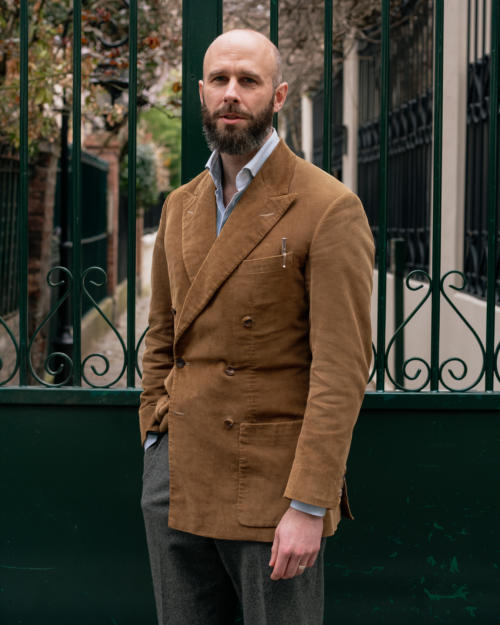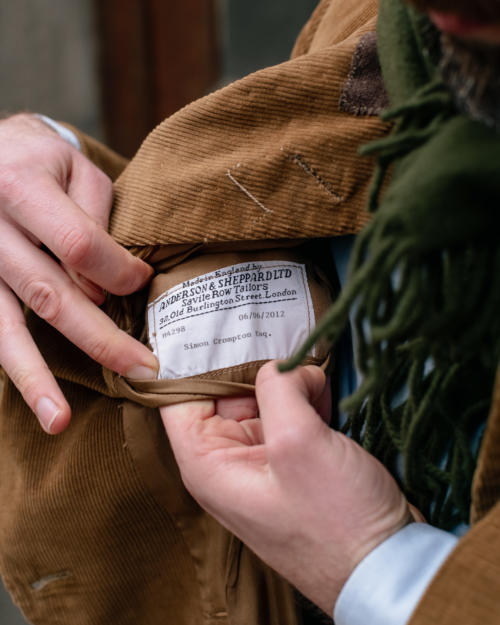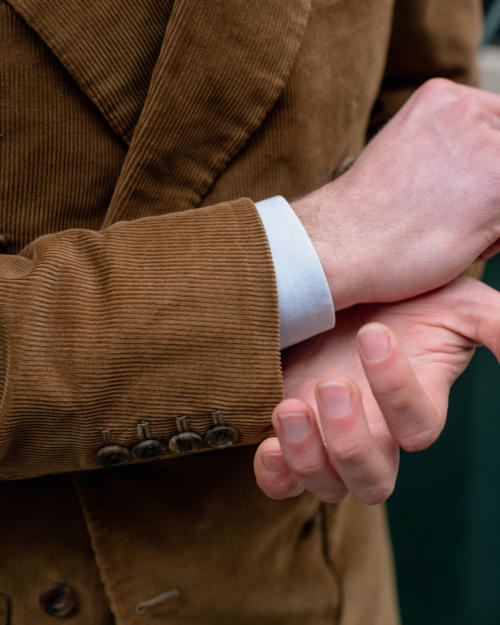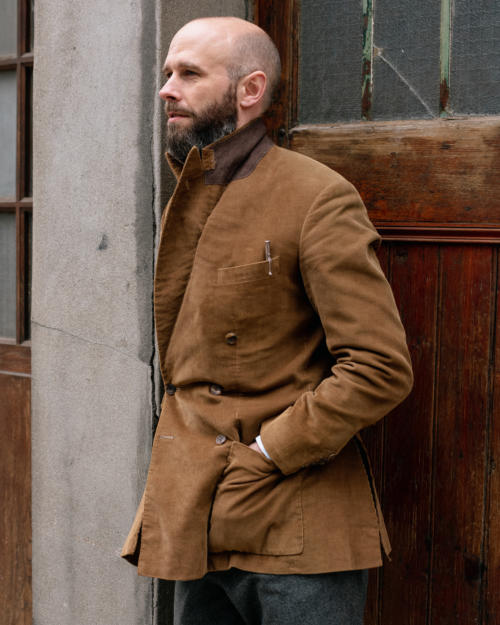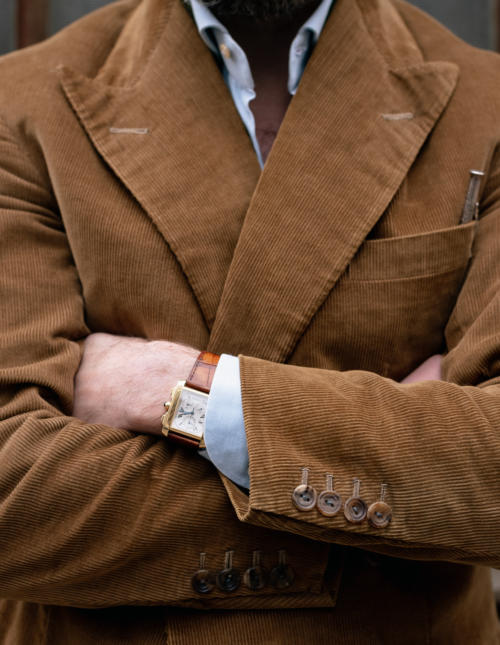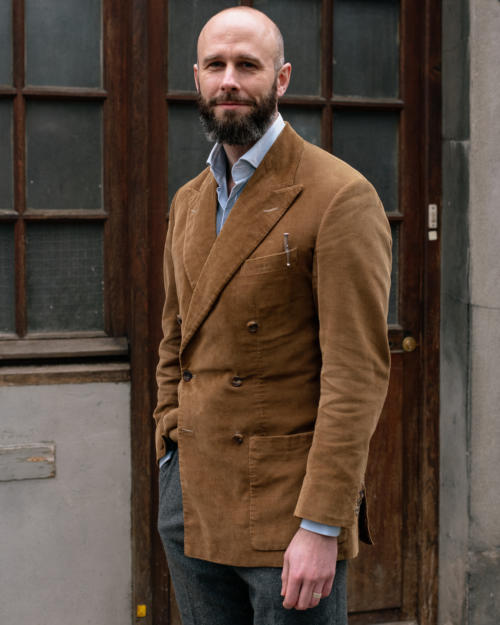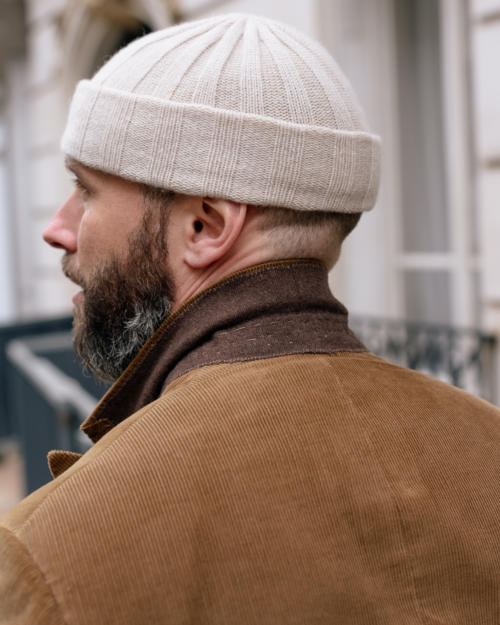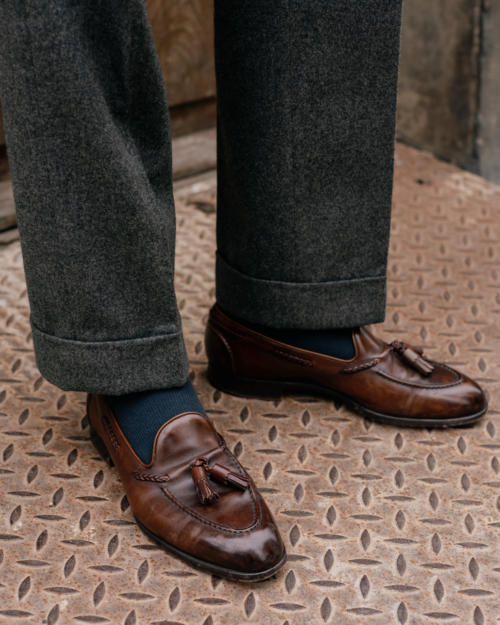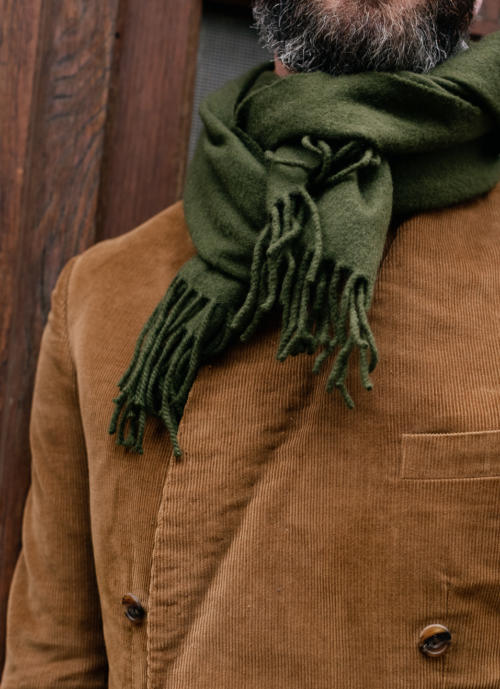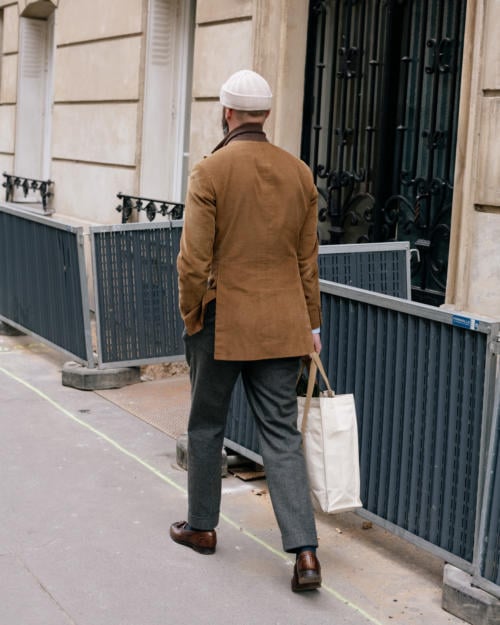This Anderson & Sheppard jacket is part of a suit I had made over 10 years ago. When I wrote back in January about my ‘favourite clothes ever’, I named it my favourite ever piece of bespoke.
It is therefore a good candidate for our ‘How great things age’ series, and a good advertisement for bespoke’s long-term value.
I brought it into A&S to be altered last year, having gone through some changes due to visiting the gym more (some weights, but mostly yoga and pilates), and cutter Danny Hall did a great job.
He not only let out the side seams, but extended the shoulders, which is not always easy. Fortunately the A&S fit is more accommodating in general to these kind of changes, unlike naturally closer-fitting styles like a Solito or Chittleborough & Morgan.
I also had the sleeves lengthened, as getting bigger in the back has the effect of pulling up the sleeves (a particular issue with shirts, given they’re that much harder to lengthen).
I mention the alterations because they demonstrate one way in which bespoke tailoring is great at ageing. I’ve always shouted about the virtues of bespoke in this regard, and a decade later I’m living proof.
But the other reason is to talk about the marks of ageing, which to me make a jacket like this – in a fairly casual material – both more personal (obviously) and more beautiful (perhaps more subjectively).
You can see the mark on the cord created by lengthening the sleeve in the image below. There are more subtle examples on other parts of the jacket, such as around the side seams.
I personally think a cord jacket should be thought of in the same way a pair of jeans, or perhaps better, an old pair of chinos. Marks are good, fraying is good; they add personality.
That’s not the case with finer things. A worsted-wool suit needs to be treated more delicately so the elbows don’t go shiny prematurely.
And interestingly, signs of wear seem to look better in a tailored jacket than tailored trousers. Balding elbows can add character, less so balding knees.
That might be an argument for buying separates rather than suits in these casual materials. It also leads neatly onto the only mistake I made with this commission, which was to use cord that was a mix of cotton and cashmere.
The material from Scabal is lovely, and I still recommend the bunch; I have my eye on the olive green, 501465. But it’s much better in a jacket than in trousers. As a trouser, the cashmere means it loses shape.
(I’ll be writing a fuller piece on different cord bunches and how they compare in a couple of weeks, so maybe hold off questions until then.)
I wouldn’t say the jacket has proven to be that versatile. I love everything else about it – the material, the colour, the style, the cut – and as a result get great joy from wearing it. But it doesn’t work with that many trousers and looks.
It’s best with a good tailored cotton trouser in beige, as shown in that ‘favourite clothes ever’ article. It’s also great with grey or green flannels, as pictured, but here there is a risk of it looking a little old-mannish. I find myself wanting to add alternative touches, such as a denim shirt.
The Anderson & Sheppard cut also places the jacket somewhere between Neapolitan and structured English in terms of smartness. As a result it’s harder to wear with jeans – you need to perhaps wear it open, with the collar up, or in some other way mess around with the tailored lines.
Being a double-breasted doesn’t help of course. It adds great style, but detracts from the versatility. That’s why I’ve tried in the past to have single-breasted versions made, at Pirozzi and at William Crabtree.
However, I think it’s important to recognise that there is often a downside to versatility. A jacket that goes with everything is unlikely to have as much personality of its own.
It’s not because of its versatility that it’s my favourite bespoke ever; it’s because I love wearing it so much when I do.
Finally, I’ve mentioned this before but I think these images are a particularly nice illustration of why the Anderson & Sheppard DB cut is so nice.
In the image above, look at the line that runs from the fastened waist button, into the rolling lapel, over the top of the draped chest, finishing in that distinctively tall A&S collar.
I think it’s so elegant. You don’t get that line and roll with any non-drape tailor, and not with any ready-made suit either. Some aspects of the A&S cut I know people dislike, like the slightly messy back of the sleeve, but I find the appeal of that line and drape to be pretty universal.
The suit was cut in June 2012 by John Hitchcock, then head cutter at A&S, in Scabal cotton/cashmere.
It is shown with:
- Shirt by Simone Abbarchi in Lighter Everyday Denim
- Flannel trousers by Whitcomb & Shaftesbury
- Cashmere scarf by Begg & Co/PS
- Tassel loafers (Belgravia model) by Edward Green
- Cashmere PS watch cap
- Canvas tote bag by Ichizawa Hanpu at Trunk (not currently on offer, but apparently coming back)
Photography: Alex Natt @adnatt
from Permanent Style https://ift.tt/pNYThEq
via IFTTT
